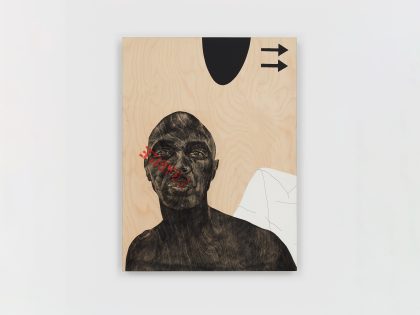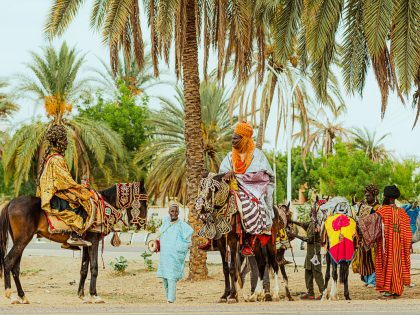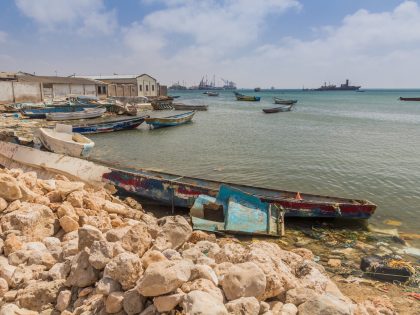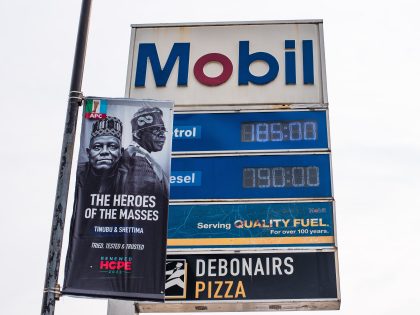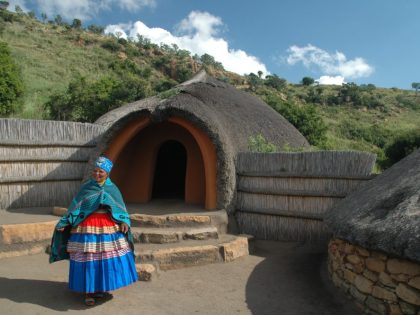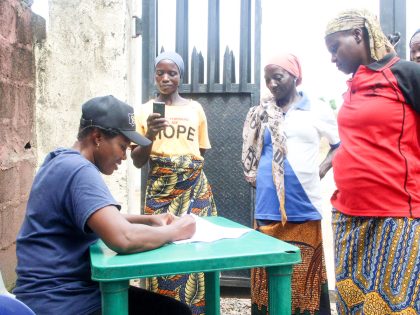The Bullshit Files: The “Mandela Ray Ban Sculpture”
Public art, the vandalism of Nelson Mandela’s legacy for commerce and the spoiling of public space in Cape Town.

Images Credit: Via Art Times on Facebook.
Real art makes those with privilege feel uncomfortable.
It was my girlfriend who wrote to me about it via instant message: “Did you see this Madiba shit they’re putting up on Sea Point promenade?” I had to wipe my eyes looking at the event invite. It was eye-wateringly crass. The City of Cape Town was unveiling an “artistic tribute” to Nelson Mandela entitled Perceiving Freedom, in the form of a pair of wayfarer Ray-Ban sunglasses on a green space in one of the wealthiest parts of the city. The invite featured a Mandela quote and a picture of him wearing a pair of similar styled sunnies. A coterie of ‘righteous’ officials and representatives, including F.W. de Klerk—there is also a proposal to rename an arterial after him—and from the World Design Capital and Ray-Ban were in audience.
Not merely a puerile gesture at public art, Perceiving Freedom is a pathetic appropriation of commemoration as cover for a commercial promotion. Really, it’s a stunning emetic trigger that suggests that Nelson Mandela is beckoning us from the afterlife to buy Ray-Ban sunglasses, to do our duty for reconciliation and nation-building by consuming this luxury product.
What an incredible opportunistic whitewashing of an iconic legacy. No wonder the unveiling is on the cusp of summer, and not a year before Mandela’s passing. And is it not ironic that the marketing spin does not mention that Madiba’s eyes were damaged while he was incarcerated on Robben Island, the result of dust and blinding light of years of working the lime-quarry.
Luckily Perceiving Freedom has clear and not rose-tinted lenses. It’s oriented to face Robben Island. Michael Ellion, the artist, intended it to allude to Mandela’s ruminations about freedom, and the viewers’ lack of perception of ‘the invisible barriers and prejudices’ that still cloud their perspective. In other words, ‘misperceptions’ about race, class and gender can be overcome with a pair of Ray Ban sunglasses, rather than the hard work of interrogating one’s privilege.
But this is not surprising. In South Africa, there’s a growing idea that deep psycho-social problems that relate to the difficult past can be resolved through acts of consumption. And, often, sentiment overrides taste when it comes to the commodification of liberation history. The Robben Island Jewelry project shows that ‘reconciliation’ narrative can transmute the debris of even the most traumatic black histories into gold.
But maybe Perceiving Freedom is too ‘higher concept’ for me, ‘too cerebral’. It’s certainly far removed from Soft Walls, another work that engaged with belonging in the city. Michael Ellion had intended his piece to be “a testament to the power of the mind”. Go look at his website. Even so, you cannot but notice his sunglasses concept is not original, since it bears strong resemblance to another in Denmark (thanks @Telemigo).

You may need sunglasses to approach this work. The promotional photos indicate that the majority of the dignitaries, beneficiaries and sponsors involved were white. Why such a significant lack of black participation? How did Michael Ellion land such a prime piece of exhibition real-estate, and how did he acquire sponsorship and or the endorsement of the city? Why do art publications like Art Times blindly endorse the project? This raises questions about the dominant tastemakers in the South African art world, and their interests in shaping what is considered appropriate public commemoration, especially in relation to the World Design Capital project.
You only have to look at Tokolos Stencils, a radical art collective, who have been mobilising the memory of Marikana through stencil art and by ‘disrupting’ colonial and apartheid statues. They have been branded vandals. But neither has the city made any effort to erect a Marikana Memorial of its own, let alone one on the holy ground that is Sea-Point Promenade. Who really are the vandals here? What is appropriate tribute? Because all I see when I look at those sunglasses is the vandalism of Nelson Mandela’s legacy and the spoiling of public space in Cape Town.
Images Credit: Via Art Times on Facebook.












